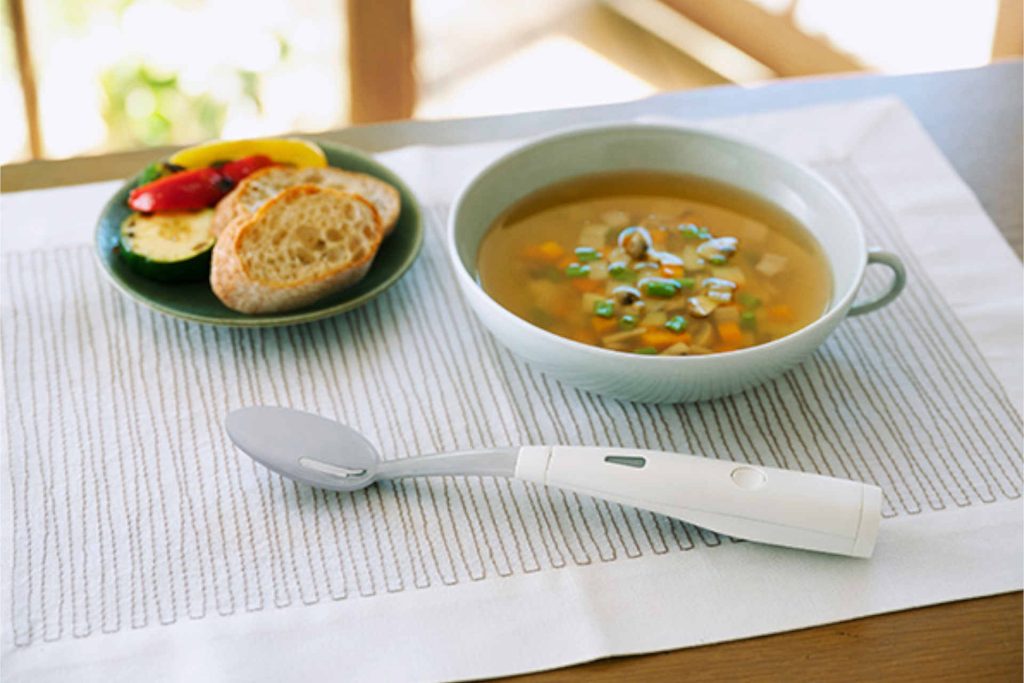
Salt is one of the most important ingredients in cooking, but increased salt consumption can have serious health consequences. Kirin Holdings has now developed a revolutionary gadget: the Electric Salt Spoon, which uses electricity to enhance the taste of food. But what is behind it? And could this device even become a game changer in the restaurant industry?
According to the World Health Organization (WHO), the recommended maximum salt intake is 5 grams per day. However, in many countries, including Japan, actual consumption is significantly higher. Too much salt increases the risk of high blood pressure and cardiovascular disease. But the biggest problem is that less salt often means less flavor. This is where the Electric Salt Spoon comes in.
Developed by Kirin Holdings, the spoon uses weak electrical stimulation to enhance the perception of salt and umami flavors by up to 1.5 times. The technology was developed in collaboration with Meiji University and works by specifically stimulating the taste buds with electricity.
The principle: a weak current influences the perception of sodium ions, which are responsible for the salty taste. This makes the food taste more intense, even though it actually contains less salt.
In initial tests, the device was tried out with low-salt foods such as miso soup. The result: the majority of test subjects found the food to be spicier and more flavorful, even though the salt content was reduced by 30%. The perception of umami, the so-called fifth taste, was also enhanced.
The possibilities of this gadget for the restaurant industry are enormous:
Kirin initially sold the Electric Salt Spoon online in a limited edition of 200 pieces. Demand was high, so a broader market launch will follow. At the same time, work is underway on other devices, including electric chopsticks and bowls, which are intended to have the same effect.
The Electric Salt Spoon is an innovative gadget with great potential. It could help make health-conscious eating more appealing. However, it remains to be seen whether the technology will catch on in the long term and whether guests are willing to accept electricity as a seasoning.

Finely woven, locally produced, and stylishly presented: table linen from Austria is experiencing a revival. Why regional textiles are taking on new significance for the restaurant and hotel industries and connoisseurs, and how tradition, sustainability, and design are merging to make a strong statement.
At a time when authenticity, regionality, and sustainability have become the currency of upscale hospitality, an often underestimated element is coming back into focus: table linen. What used to be purely functional is now becoming a stylistic extension of the host’s DNA. And it is local companies that are inspiring the industry anew with their spirit of innovation and tradition.
An artfully set table tells more than the menu. For Björn Kroner, the table is not just a place to eat, but the center of life. With his new book Blumen, Glanz und Tafelfreuden (Flowers, Splendor, and Table Delights), he calls for a rethinking of table settings—as a stage for stories, design, and emotions. What the hotel and restaurant industry can learn from this.
With “Dreams,” Miele is launching the first outdoor kitchen in 2026 that brings indoor perfection to the outdoors. Modular in design, weatherproof, and equipped with intelligent high-end grills, this world first sets new standards – from 900 degrees of steak power to app-controlled temperature regulation.


Salt is one of the most important ingredients in cooking, but increased salt consumption can have serious health consequences. Kirin Holdings has now developed a revolutionary gadget: the Electric Salt Spoon, which uses electricity to enhance the taste of food. But what is behind it? And could this device even become a game changer in the restaurant industry?